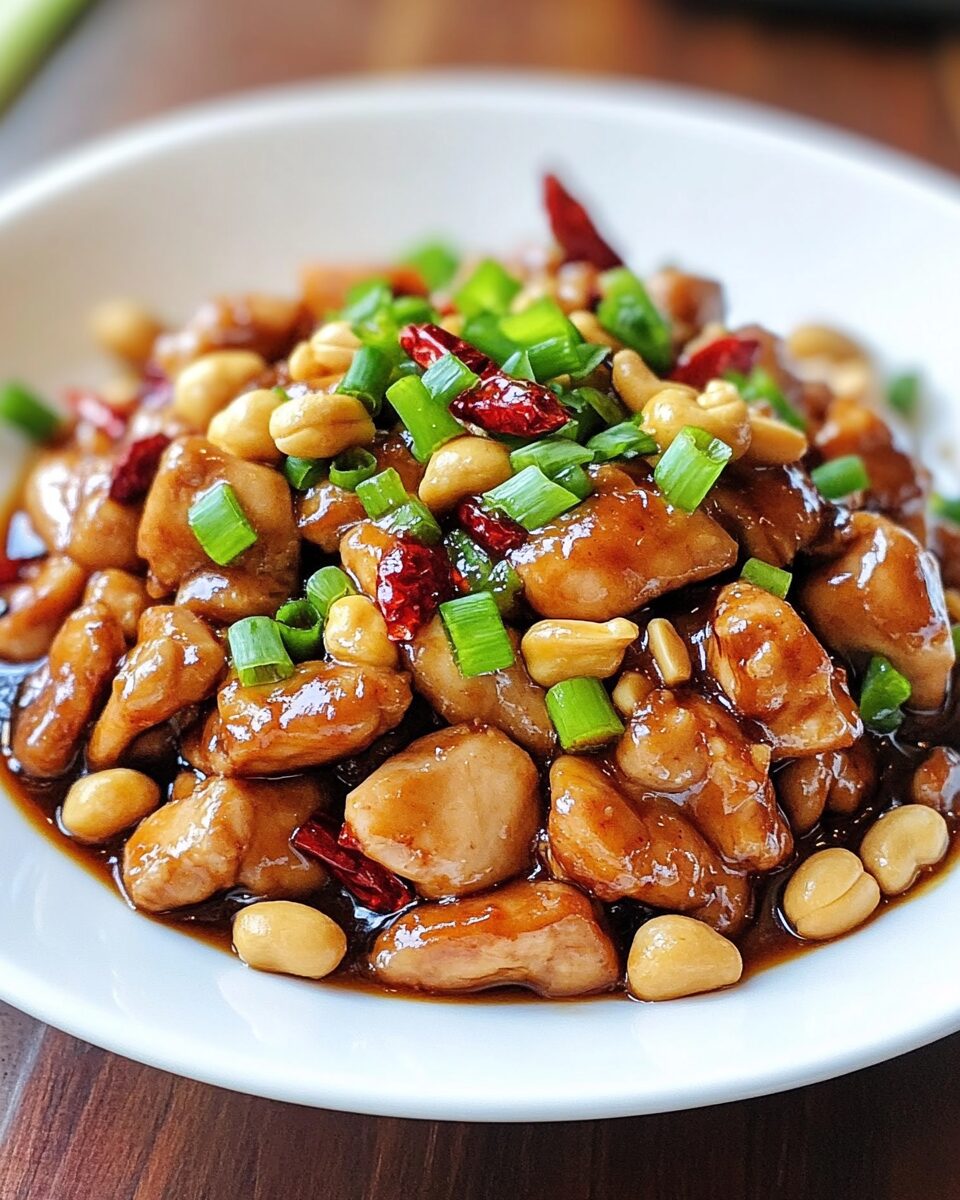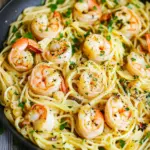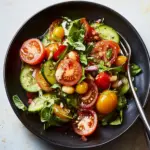The origins of Kung Pao Chicken lie in the heart of Sichuan province, known for its bold use of spice and aromatics. This dish balances fiery dried chilies, numbing Sichuan peppercorns, and the richness of garlic and ginger with sweet-savory sauce and crunchy peanuts — all stir-fried to perfection.
Far from just a takeout staple, this version of Kung Pao Chicken is a taste of true Chinese homestyle cooking. It’s versatile enough for a weeknight dinner but flavorful enough to impress guests. Mastering the right heat and timing gives this dish its signature complexity and depth, worthy of any dinner table.
Full recipe:
Ingredients:
To roast the peanuts (optional):
-
1 teaspoon vegetable oil
-
1 cup raw shelled peanuts (with or without skin)
For the chicken marinade:
-
1 lb (450g) boneless chicken breast or thighs, diced
-
1 teaspoon cornstarch
-
1 teaspoon oil
-
1 teaspoon Shaoxing wine
-
1/8 teaspoon salt
-
Pinch of white pepper
For the sauce:
-
1 tablespoon light soy sauce
-
1/2 tablespoon dark soy sauce
-
1 tablespoon rice vinegar
-
1 tablespoon sugar
-
2 tablespoons water
-
1 teaspoon cornstarch
For stir-frying:
-
3 tablespoons oil (divided)
-
3 cloves garlic, smashed and sliced
-
2 slices ginger, minced
-
2 dried red chilies, deseeded and chopped
-
1/2 teaspoon Sichuan peppercorn powder
-
6 scallions (white parts only), cut into 3/4-inch pieces
Directions:
-
Roast Peanuts: Heat 1 tsp oil in a wok over medium heat. Add peanuts and stir constantly for 3 minutes. Turn off heat and stir 1 more minute. Set aside to cool. (Or use pre-roasted peanuts.)
-
Marinate Chicken: In a bowl, combine chicken with marinade ingredients. Mix well and set aside for 20 minutes.
-
Make Sauce: In a small bowl, whisk together all sauce ingredients and set aside.
-
Stir-Fry Chicken: Heat 2 tbsp oil in a wok over high heat. Add chicken and sear until browned. Remove and set aside.
-
Aromatics: Add 1 tbsp oil to the wok, reduce heat to low. Add garlic, ginger, chilies, Sichuan peppercorn powder, and scallions. Stir for 1–2 minutes until fragrant.
-
Combine: Return chicken to wok. Increase heat to high. Stir-fry for 1 minute. Stir sauce again and add to wok. Cook until thickened (1 minute).
-
Finish: Stir in roasted peanuts. Mix well and serve hot.
Prep Time: 30 minutes | Cooking Time: 10 minutes | Total Time: 40 minutes
Kcal: 440 kcal | Servings: 4 servings
Flavor Profile and Key Elements
What sets Kung Pao Chicken apart is its harmonious layering of flavors. In a single bite, you’ll experience heat, sweetness, acidity, saltiness, and umami. The interplay between spicy chilies and numbing peppercorns is a trademark of Sichuan cuisine — a sensation known as “málà” (麻辣).
The dish’s texture also contributes significantly to its appeal. Juicy, tender pieces of chicken are contrasted with the crunch of roasted peanuts and the aromatic bite of garlic and ginger. The scallions add freshness, while the sauce clings tightly to every ingredient, creating an intensely flavorful stir-fry that excites the senses without overwhelming them.
The sauce itself is a masterclass in balance — typically combining light and dark soy sauces, vinegar for acidity, sugar for sweetness, and cornstarch to thicken the mixture to a glossy coating. The timing and heat control during cooking are critical, as overcooking can result in dry chicken or burnt spices, and undercooking can lead to a raw or disjointed flavor profile.
Why This Version Stands Out
This particular recipe follows a traditional Sichuan-style method, offering a more authentic take compared to common Westernized adaptations. One unique element is the use of freshly roasted peanuts, which are quickly stir-fried in oil until aromatic and then cooled to develop a satisfying crunch. While pre-roasted peanuts can be used for convenience, this small extra step adds a layer of freshness and depth to the dish.
Another highlight is the marination technique. The chicken is lightly coated in cornstarch, oil, Shaoxing wine, and seasonings — a simple velveting method that helps tenderize the meat and create a juicy interior once seared in a hot wok. This method is frequently used in Chinese cooking and helps maintain the chicken’s integrity under high heat.
The recipe also uses only the white parts of scallions for a slightly milder onion flavor and a tender bite. The aromatics are treated with care, cooked gently at first to bloom their flavors before the heat is turned up for the final stir-fry. The end result is a cohesive, deeply satisfying dish that delivers on both taste and texture.
Cooking Tips and Troubleshooting
Even though Kung Pao Chicken is relatively easy to prepare, a few tips can help elevate the dish:
-
Use High Heat: Stir-frying requires quick cooking over high heat. Use a wok if possible, or a large skillet that can withstand high temperatures. This technique ensures that the chicken sears quickly, locking in moisture and developing a flavorful exterior.
-
Don’t Burn the Chilies: While dried red chilies are essential for flavor and heat, they can burn easily, turning bitter. Add them to the oil on low heat and keep them moving until aromatic, then proceed with other ingredients.
-
Prep Everything First: Once you start cooking, things move fast. Have all your ingredients prepped and within reach to avoid overcooking or missing steps.
-
Customize the Heat: The level of spice is highly personal. You can adjust the number of dried chilies or use milder ones if you’re sensitive to heat. Sichuan peppercorn powder can also be increased or decreased to control the numbing effect.
-
Velveting Matters: Marinating the chicken with cornstarch and oil before cooking is a crucial step. It gives the meat that soft, almost silky texture typical of restaurant-style Chinese stir-fries.
Nutrition and Dietary Considerations
Kung Pao Chicken is surprisingly balanced in terms of nutrition. A single serving provides a strong source of protein from the chicken and healthy fats from the peanuts. Garlic and ginger contribute antioxidant and anti-inflammatory properties, while scallions provide a dose of vitamins and freshness.
That said, the dish is also relatively high in fat due to the oil used for stir-frying and peanuts. If you’re watching your calorie intake, you can reduce the oil slightly or use a non-stick pan to minimize additional fats. The sodium content from soy sauces can also be adjusted by using low-sodium versions.
For gluten-free diets, ensure that you use tamari or gluten-free soy sauce, and double-check that your rice vinegar is gluten-free as well. The dish is naturally dairy-free and can be served with steamed rice or cauliflower rice for a lower-carb option.
How to Serve Kung Pao Chicken
Traditionally, Kung Pao Chicken is served hot and fresh out of the wok, often over a bed of white rice. Jasmine rice is a great pairing, as its subtle fragrance complements the bold flavors of the dish without competing.
If you’re planning a full Chinese meal, consider serving it alongside simple vegetable stir-fries like Chinese broccoli with garlic, or a refreshing cucumber salad to cool the palate between bites. A bowl of hot and sour soup or egg drop soup would also round out the meal beautifully.
As leftovers, the dish reheats well in a hot skillet, although it may lose some of its crunch. Microwaving is not recommended, as it can make the peanuts soggy and the chicken rubbery.
Modern Twists and Variations
Though this recipe sticks to the traditional Sichuan method, Kung Pao Chicken is highly adaptable. Some modern home cooks like to include vegetables such as bell peppers, celery, or zucchini to increase volume and nutritional value. Others substitute chicken with tofu, shrimp, or mushrooms for a vegetarian or pescatarian version.
Another variation involves swapping the peanuts for cashews, which add a buttery richness to the dish. For an even bolder kick, some recipes call for a splash of chili oil or a spoonful of doubanjiang (fermented chili bean paste), which adds umami and depth.
The dish has even inspired fusion creations like Kung Pao tacos, lettuce wraps, and grain bowls — proving just how versatile and beloved this flavor profile has become across cuisines.
Conclusion
Kung Pao Chicken is more than just a spicy stir-fry — it’s a culinary experience rooted in history, balance, and bold flavor. This dish exemplifies the heart of Sichuan cooking, where heat is celebrated, but never without nuance. It delivers textural contrast, complex taste, and visual appeal in every bite.
Whether you’re preparing it as a quick weeknight dinner or showcasing it at a dinner party, Kung Pao Chicken is sure to impress. Its adaptability, quick cooking time, and crowd-pleasing flavors make it a staple recipe every home cook should have in their repertoire.
If you’re looking to bring a taste of authentic Chinese cuisine into your kitchen, this dish is the perfect place to start — no takeout required.






